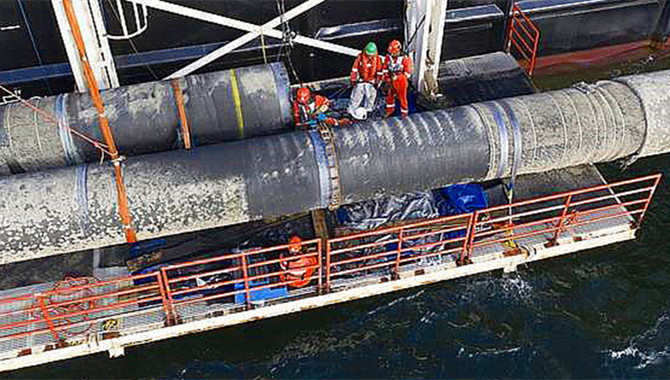
China has taken measures to secure natural gas, electricity and coal supplies ahead of another expected cold snap in coming days, the country’s top policy planner, the National Development and Reform Commission, said in a Dec. 28 press conference, according to a transcript on its website.
The move comes after China faced energy shortages and price hikes earlier in December in several provinces, due to a sharp drop in temperatures that coincided with a faster-than-expected recovery in energy demand on the back of a rebound in economic activity.
The cold snap is forecast to hit a wide swathe of the country’s central, eastern, and northwestern regions starting from Dec. 28, causing temperatures to drop by as much as 10-12 degrees Celsius, NDRC said. Meanwhile, North Asian spot LNG prices hit a six-year high with S&P Global Platts JKM for February assessed at $12.514/MMBtu on Dec. 28.
In order to increase natural gas supply, NDRC has urged upstream producers to operate at full capacity, asked LNG receiving terminals to optimize their window slots to boost imports and increased spot LNG purchases, it said.
The middle section of China-Russia natural gas pipeline eastern route started operations from Dec. 3, which is expected to increase gas supply by more than 10 million cu m/day, and the restart of Beihai LNG in southwestern Guangxi province is also expected to boost supply, it said.
The government will focus on increasing gas supply for heating to seven key provinces and cities in the northern regions, where daily gas supply currently is around 470 million cu m/d, accounting for about 40% of national gas supply, according to NDRC.
Other measures include coordinating the use of gas storage capacity, which has grown by 5 billion cu m from last year and is around 10 billion cu m as of Dec. 24, equal to roughly 70 days’ supply.
PipeChina, the biggest state-owned oil and gas infrastructure operator, has also raised storage capacity at its gas pipelines starting from Dec. 27, in a bid to cope with the short-term demand surge during this cold snap, NDRC said.
Some pipeline gas supply has been diverted from the south to northern provinces, on projects such as the northward route of the Zhonggui Line and reverse transmission of the Guangzhou Station. LNG cargoes have also been diverted to northern receiving terminals, along with adjustments in supply to industrial consumers.
China’s electricity generation and consumption increased by around 11% year on year in December, with double-digit growth in power consumption in 20 provincial power grids, NDRC said. It said the daily maximum power load and power generation both exceeded the summer peak, in a rare occurrence, leading to peak power rationing in provinces like Hunan, Jiangxi and Zhejiang.
The demand situation has stabilized, but preparations are being made to address sustained low temperatures.
To meet coal shortages, NDRC has asked major coal-producing regions such as Shanxi, Shaanxi and Inner Mongolia to increase production, called for prioritizing power generation, monitor coal storage levels in power plants, with current storage levels at over 18 days of supply, and boost supply to shortage prone provinces like Hunan and Jiangxi.
It said coal imports should be appropriately increased, and coal should be used first for power generation and heating, and imported coal supply should be fully utilized.
NDRC is also debottlenecking coal transportation, especially from major production areas of Shanxi, Shaanxi and Mongolia.
According to data from the railways department, daily coal loadings have exceeded 80,000 vehicles, and the Daqin Railway system has shipped more than 140 trains a day, which is the highest level in history.
Source:Platts
The opinions expressed herein are the author's and not necessarily those of The Xinde Marine News.
Please Contact Us at:
media@xindemarine.com


 Ningbo Containerized Freight Index Weekly Commentar
Ningbo Containerized Freight Index Weekly Commentar  Ningbo Containerized Freight Index Weekly Commentar
Ningbo Containerized Freight Index Weekly Commentar  Ningbo Containerized Freight Index Weekly Commentar
Ningbo Containerized Freight Index Weekly Commentar  BIMCO Shipping Number of the Week: Bulker newbuildi
BIMCO Shipping Number of the Week: Bulker newbuildi  Ningbo Containerized Freight Index Weekly Commentar
Ningbo Containerized Freight Index Weekly Commentar  Ningbo Containerized Freight Index Weekly Commentar
Ningbo Containerized Freight Index Weekly Commentar